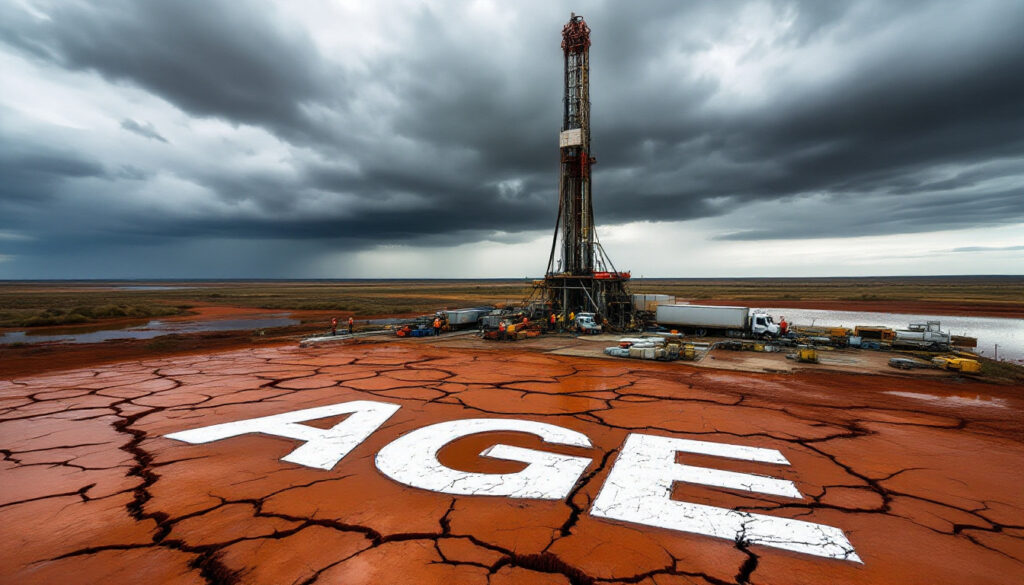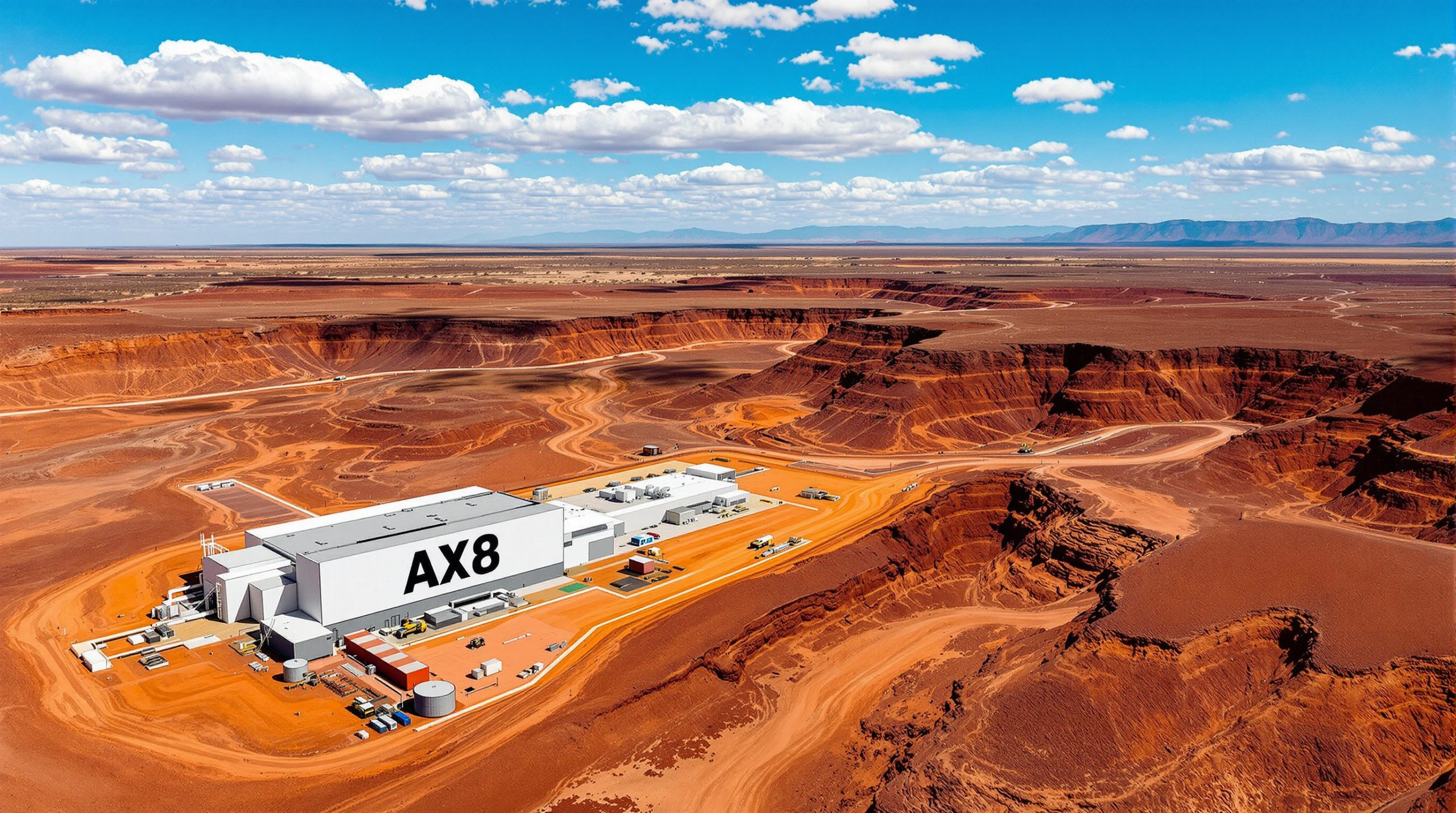Alligator Energy Halts Big Lake Uranium Drilling as Floodwaters Approach
Alligator Energy (ASX: AGE) has been forced to temporarily suspend its follow-up drilling program at the Big Lake Uranium Project in South Australia due to imminent flooding from significant rainfall in Western Queensland. The company has implemented rapid demobilisation procedures to ensure personnel safety and equipment protection.
Nature Forces Strategic Retreat at Promising Uranium Exploration Site
Alligator Energy commenced a rotary mud drilling program at the Big Lake Project in late February 2025, targeting the uranium-prospective Namba and Eyre formations. Despite initial equipment commissioning challenges, the team managed to complete two drill holes before the looming flood threat necessitated an early withdrawal.
The severity of the situation became apparent when flood alerts were issued for both the Cooper and Strzelecki Creek systems. By Monday, rising water levels in Cooper Creek had already begun flowing into Strzelecki Creek, signalling the start of what could be a significant flooding event.
"I thank our Alligator team and the drilling crews for their rapid and detailed planning, regular communication and quick actions in being able to safely de-mobilise at short notice," stated Greg Hall, CEO and Managing Director of Alligator Energy.
The flooding is expected to match historical events in severity, potentially comparable to the significant 1974 flood that affected the region. This natural occurrence has disrupted what was otherwise a promising continuation of exploration work following previous successful drilling campaigns.
Understanding Rotary Mud Drilling in Uranium Exploration
For investors interested in the technical aspects of uranium investment strategic opportunities, rotary mud drilling represents a specialised technique particularly suited for the sedimentary basin environments like those at Big Lake. This method uses drilling fluid (mud) circulated through the drill string to:
1. Cool and lubricate the drill bit
2. Carry cuttings to the surface
3. Stabilise the borehole walls
4. Prevent formation fluids from entering the well
This approach is especially valuable when exploring for uranium in sandstone formations, where maintaining hole integrity is crucial for accurate sampling and downhole gamma logging—the primary method for detecting uranium mineralisation. The technique is particularly effective in the unconsolidated sediments typical of the Lake Eyre Basin.
Gamma logging, which Alligator had begun implementing before the evacuation, measures natural gamma radiation in the borehole to identify zones of uranium mineralisation. This non-destructive method provides immediate feedback on potential uranium presence and concentration.
The Alligator Energy Big Lake drilling programme specifically targeted formations known to host uranium deposits in similar geological settings. The Namba and Eyre formations are considered highly prospective for sandstone-hosted uranium deposits, which often form when uranium-bearing groundwater flows through permeable sandstone and encounters a reducing environment, causing the uranium to precipitate.
Rapid Response Protects Assets and Personnel
Faced with the advancing floodwaters, Alligator Energy's management made the decisive call to issue a force majeure notice to its drilling contractor and initiate comprehensive demobilisation procedures:
- One drill hole has been fully rehabilitated
- A second hole has been capped and sealed for future access
- All drilling equipment has been removed from the site
- Camp areas have been secured and evacuated
- All personnel and vehicles have safely departed the area
This quick action demonstrates the company's commitment to responsible operations and environmental stewardship, while also protecting valuable exploration assets.
The company acknowledged the assistance from SANTOS personnel and contractors who provided temporary storage space in yards at Moomba, highlighting the cooperative relationships maintained by Alligator in the region.
According to Greg Hall, the Alligator Energy Big Lake drilling team had anticipated the flood event but believed there was adequate time to complete planned tasks. However, continued rain events in Western Queensland accelerated the timeline, necessitating the early cessation of operations.
Investment Implications: Short-Term Delay vs. Long-Term Potential
While the drilling interruption represents a temporary setback in Alligator's exploration timeline, several factors suggest this pause does not diminish the project's longer-term potential:
- Initial drilling encountered similar oxidised sands to last year's promising exploration
- One hole was successfully gamma probed with results pending
- The company has preserved access to partially completed work by properly securing drill sites
- The flooding event, while disruptive, is a natural phenomenon rather than a technical or geological challenge
For investors, this situation represents a matter of delayed gratification rather than a fundamental change to the exploration thesis. The strategic role of cash in portfolios can help weather such temporary setbacks while maintaining exposure to the sector. Furthermore, the uranium market continues to demonstrate strength, with global demand increasing as nuclear power gains prominence in clean energy discussions.
Alligator Energy maintains a diversified portfolio beyond the Big Lake Project, with uranium exploration interests across Australia and a strategic position in energy transition minerals, particularly cobalt-nickel resources. This diversification provides some buffer against single-project delays.
The Geological Context of Big Lake Uranium Project
The Big Lake Uranium Project is situated in the Lake Eyre Basin, a region known for its potential to host sandstone-type uranium deposits. These deposits form in sedimentary basins and are characterised by their amenability to in-situ recovery (ISR) mining methods, which offer environmental and cost advantages over conventional mining.
The target formations at Big Lake—the Namba and Eyre formations—consist of permeable sandstones that can act as conduits for uranium-bearing groundwater. When these fluids encounter reducing conditions, uranium precipitates out of solution to form concentrated deposits.
The Alligator Energy Big Lake drilling programme was designed to test extensions of previously identified uranium indicators and to further define the geological model of the deposit. The data gathered, even from the limited drilling completed before the flood interruption, will contribute to the company's understanding of the mineralised system.
The company reported that initial holes encountered similar oxidised sands to those identified in previous drilling campaigns, suggesting geological continuity that supports the exploration model. This consistency is a positive indicator despite the abbreviated nature of the current drilling programme.
Why Investors Should Continue Tracking Alligator Energy
Despite this temporary setback, several compelling factors make Alligator Energy worth following:
1. Experienced Leadership: The company's directors and technical team bring significant uranium and nickel exploration expertise, evidenced by their efficient response to this natural challenge.
2. Strategic Commodity Focus: Alligator's concentration on uranium positions it well within the growing nuclear energy sector, while its cobalt-nickel projects align with battery technology demands.
3. Responsible Operations: The company's rapid and comprehensive response to potential flooding demonstrates commitment to safety, environmental stewardship, and asset protection.
4. Exploration Continuity: Initial indications from this year's limited drilling appear consistent with previous promising findings, suggesting the geological thesis remains intact.
Alligator Energy has committed to keeping the market informed regarding flood levels, duration, and potential timing for returning to continue the drilling program at Big Lake. This transparency provides investors with clear visibility into the situation's evolution.
Navigating Natural Challenges in Mineral Exploration
The situation at Big Lake illustrates a common challenge in junior mining investments: navigating the unpredictability of natural environments. Seasonal flooding, particularly in Australia's channel country, represents a known risk factor that exploration companies must incorporate into their operational planning.
Alligator's response to the flood threat demonstrates industry best practice in several ways:
- Early monitoring of meteorological conditions and flood potential
- Proactive communication with stakeholders including contractors and neighbouring operations
- Rapid implementation of safety protocols and equipment protection
- Proper site remediation and securing of drilling assets
- Clear communication to shareholders about the situation and its implications
These actions reflect the company's operational maturity and commitment to responsible resource development. For investors, such responsible management practices represent important non-financial indicators of company quality and sustainability.
While the Alligator Energy Big Lake drilling programme has been temporarily interrupted, the company remains well-positioned to resume operations once conditions permit. The careful preservation of one drill hole for future access demonstrates forward thinking and will facilitate an efficient return to operations.
For those interested in exposure to the uranium exploration sector, Alligator Energy represents a company navigating a temporary natural challenge while maintaining focus on its broader strategic objectives in the energy minerals space. In fact, the growing importance of critical mineral shortages for clean energy transition makes such exploration efforts increasingly significant on a global scale.
As competition for resources intensifies worldwide, exploration companies like Alligator are not only developing local assets but contributing to broader efforts in unlocking critical minerals through innovative approaches and strategic partnerships. Consequently, even temporary setbacks like the flooding at Big Lake should be viewed within this larger context of growing mineral demand for energy transition.
Ready to Capitalise on the Next Major ASX Uranium Discovery?
Don't miss out on game-changing mineral discoveries like uranium—get instant, AI-powered alerts on significant ASX announcements through Discovery Alert's proprietary Discovery IQ model, helping you make informed investment decisions before the market catches on. Explore how major discoveries can lead to exceptional returns by visiting the Discovery Alert discoveries page today.




